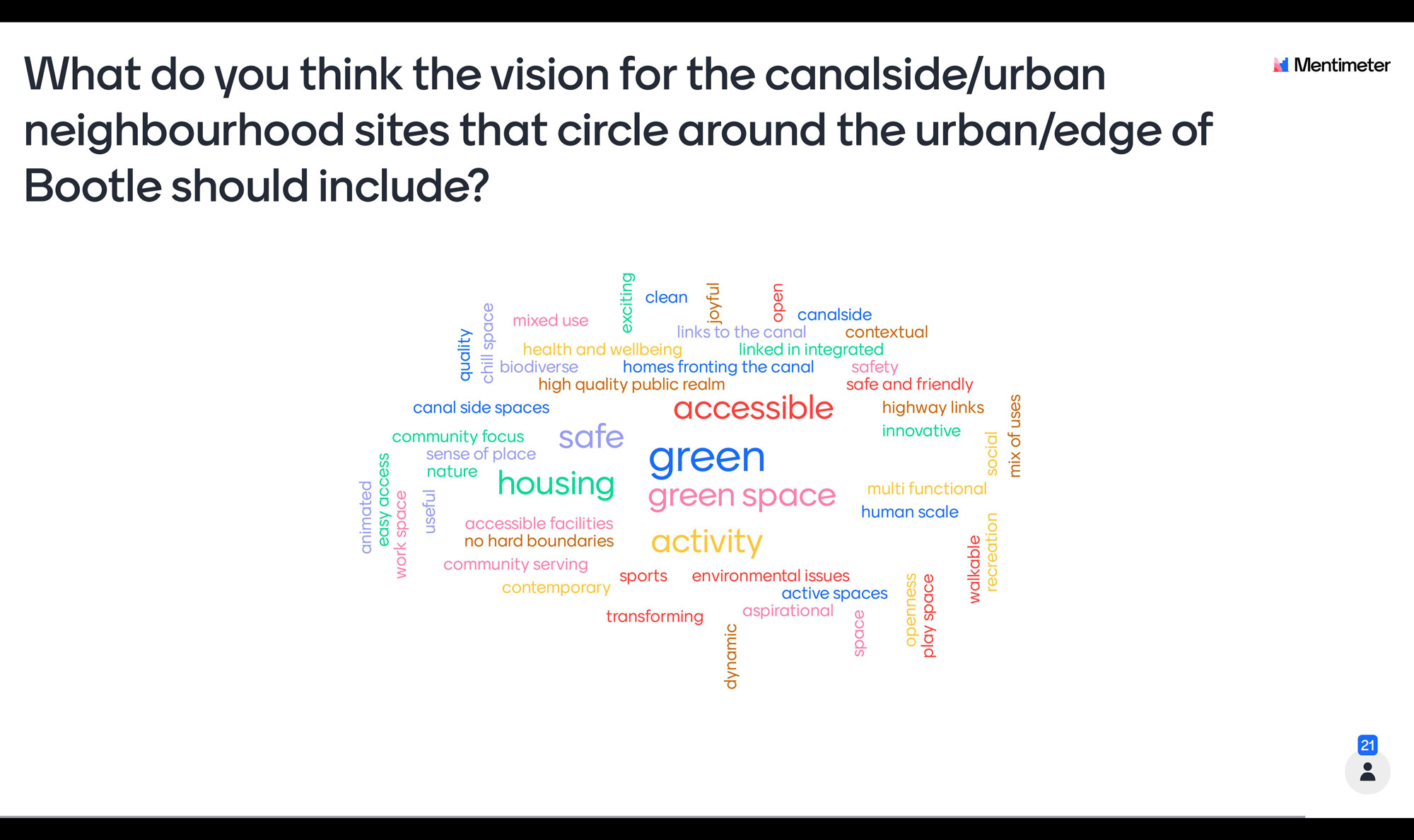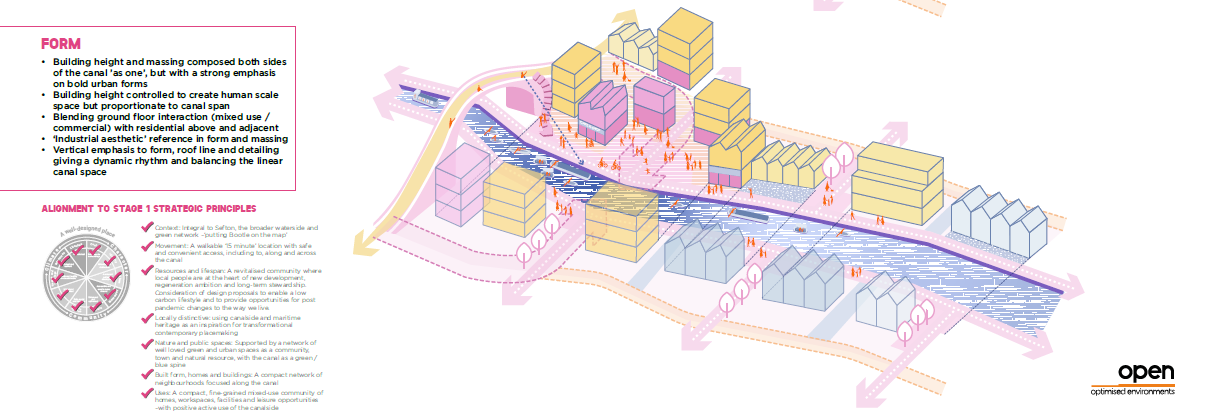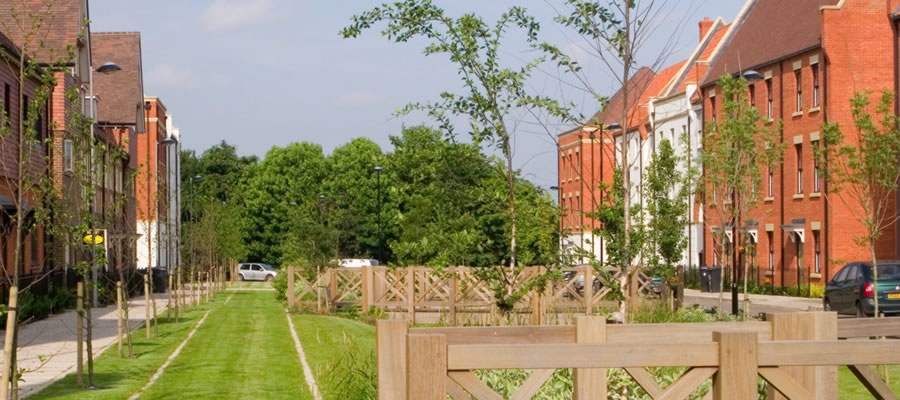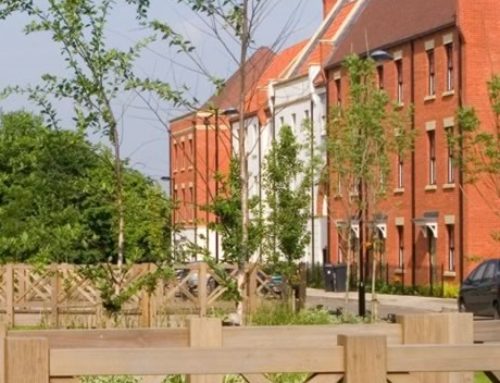Jim Fox – A Personal View on the latest Design Code Pathfinders project, drawing from experiences with the NMDC Phase 1 pilots
The Government has announced 25 National Model Design Code (NMDC) Pathfinder pilots – focusing on:
- Aspirational, simple and illustrated coding materials
- ‘Provably popular’ local design
- The sharing of exemplary design code toolkits across the country.
Hyas have been involved in three of these and are working closely with Carlisle City Council on the Design Code Pathfinder pilot for St Cuthbert’s Garden Village Carlisle. We also worked on three of the Phase 1 pilots in 2021:
- Bootle Merseyside – inclusive coding materials with a focus on canalside design and regeneration.
- Colchester Tendring Borders Garden Community – coding evidence and visioning for a large scale new community.
- Mid Devon – district-wide coding approach for a largely rural locality.
In turn these have been informed by good practice in delivering design quality on the ground through coding and guidance, including in Essex, Leicester and Huntingdon.
This thinkpiece builds on an earlier article in 2021 by the author and shares lessons learnt over the last 12 months, focusing on character, co-design and coding materials. It also looks forward to the next phase of pilots and how we can all support the delivery of design quality on the ground.
Character and Identity
Identity is a key element on the National Design Guide’s wheel of characteristics for a well-designed place – and local distinctiveness an important principle for many local people. This is not pastiche – it is about picking up on local design cues for forward looking placemaking.
The coding pilot in Bootle enabled us to test the ‘area types’ promoted in the NMDC from town centre and higher density ‘urban neighbourhoods’ to outer suburbs and urban greenspace. NMDC urban neighbourhood densities of 60-120 net dph was a key discussion point with communities, with character analysis of popular Victorian neighbourhoods providing cues for achieving higher densities in the context of quality greenspace and accessible facilities. A focus on canalside development sites and ‘areas of change’, in the context of green connections, encouraged us to layer on ‘corridor types’ to the NMDC methodology.
Rural Mid Devon provided the opportunity to explore a less urban locality, including a range of settlement character typologies in the context of diverse and sensitive landscape character, informing ‘place specific area types’ for the emerging Culm Garden Village.

Local settlement typologies – Mid Devon
Engagement and Co-design
Pilot localities have benefited from a range of officers, interest groups and residents that have a keen interest in the area and an appreciation of place. A variety of audiences suggested a range of engagement techniques as part of a broader conversation. A time of pandemic has challenged us all to be creative about how we engage with communities – and each other – and how we can best balance evidenced outcomes with meaningful informed discussions.
In Bootle we established an engagement programme with a core team, officers, stakeholders, elected members, local groups, and residents and businesses. For these audiences we used techniques including:
- Online workshops – animated by interactive software for surveys and stakeholder visioning.
- ‘Community Zoom’ sessions with local groups – a tool that would not have been accessible 2 years ago.
- Physical drop-in sessions – for local people, in the brief summer window, to allow for a deeper conversation especially around character and identity.
This consultation provided the team with specific outcomes including confirmation of the canalside as a focus, the critical importance of greenspace and public realm, and broad support for ‘higher density, not high rise’.
Engagement in rural Mid Devon balanced strategic prioritising of design themes across the district, with detailed exploration and supplementing of NMDC ‘area types’ and block types.

Online workshops animated by interactive software
Coding Materials and Toolkits
Phase 1 pilots were designed to test and interpret key aspects of design coding rather than develop full blown codes. Our work in Colchester / Tendring focused on design evidence, strategy and process aimed at providing a platform for ongoing masterplanning and future coding.
In Bootle a design coding toolkit – for Sefton Council and with lessons for UK local authorities – demonstrated:
- Ways of using the wheel of 10 characteristics of a well-designed place
- Local interpretation of the NMDC’s ‘area types’ and coding plans
- Targeting bespoke coding through evidence based and community informed visioning
- A ‘must, should, could’ approach to coding for key site typologies (developed by urban designers OPEN) – enabling a flexible approach for the local authority where site masterplanning was not as yet available and landownership / delivery vehicles fluid.
Coding is one important part of our design toolkit. In St Cuthbert’s Garden Village Carlisle our RTPI commended Strategic Design SPD and emerging design code is part of a broader design quality push including a joined-up development team approach, design assessment and review, design competitions and a design informed St Cuthbert’s Local Plan.

Aspirational, simple, illustrated coding materials (Source: OPEN)
Lessons for the Future
Hyas – alongside other local authorities, the RTPI and speakers from the Department for Levelling Up, Housing and Communities – have shared lessons learnt from the Phase 1 pilots and generated debate. Key themes have emerged:
- Planning and development context – how can codes best fit with plans, policies and ‘areas of change’?
- Engagement and process, timescales and timing – how to best align with stakeholders and communities?
- Outputs and local interpretation – what scale and level of detail is best for your place?
- Deliverability – what is the ‘art of the possible’, in the context of viability and ownership?
- Skills and resources – can you and your partners draw on multi-disciplinary design capacity and skills?
- Transferability and sharing – where is the relevant best practice and common ground?
Design Code Pathfinder pilots are taking a considered, well resourced approach over an extended timeframe to refine briefs with the Office for Place, develop a range of design codes, and engage with communities and landowners. Our pilot at St Cuthbert’s Garden Village Carlisle – led by Carlisle City Council and supported by co-consultants – will not only focus coding on key themes and locations, but also have a keen eye on the practical delivery of design quality. The team will work with specialists in viability and infrastructure as well as close collaboration with landowners and developers. Looking forward to continuing to share experiences and deliver quality on the ground.

Jim Fox – A Personal View


